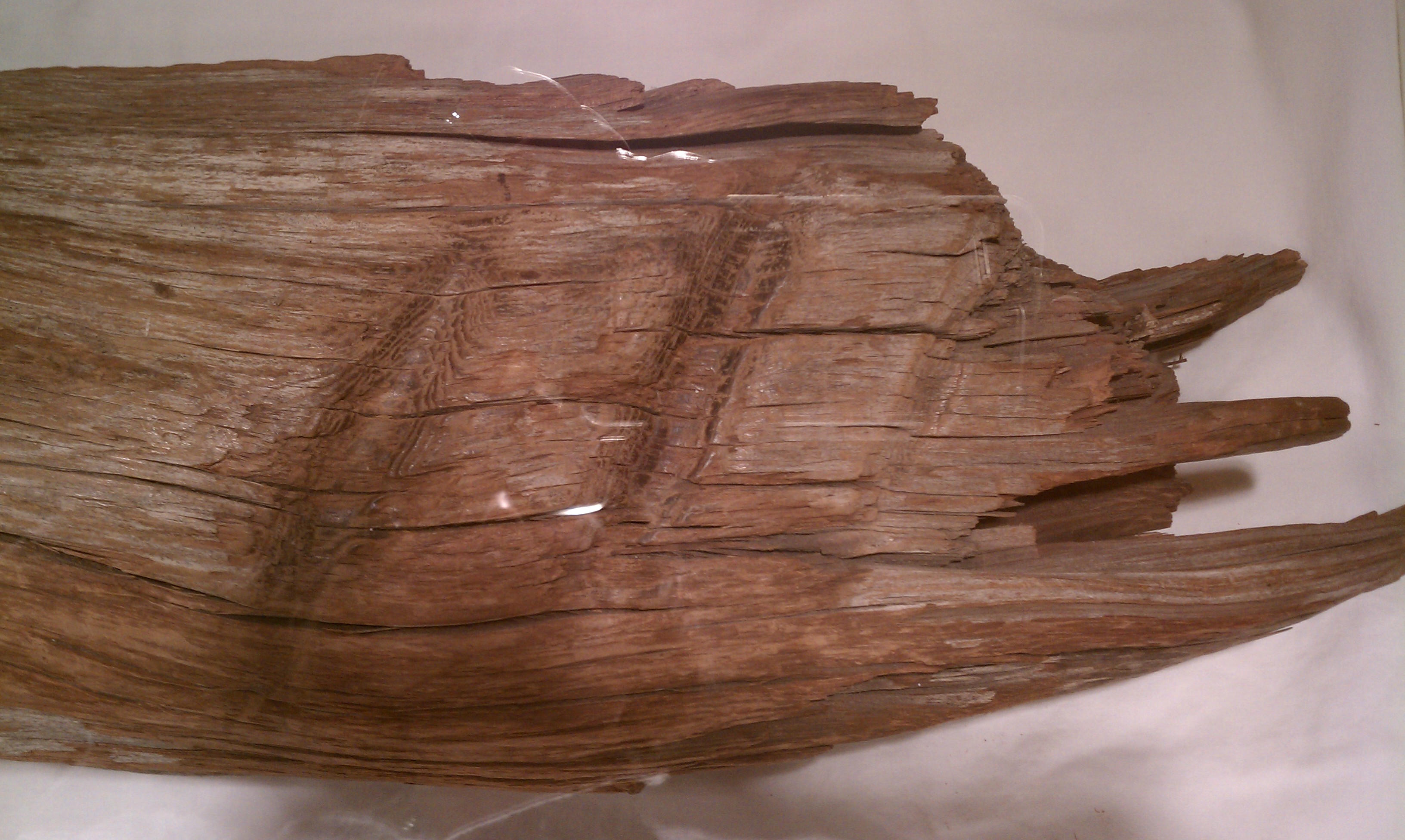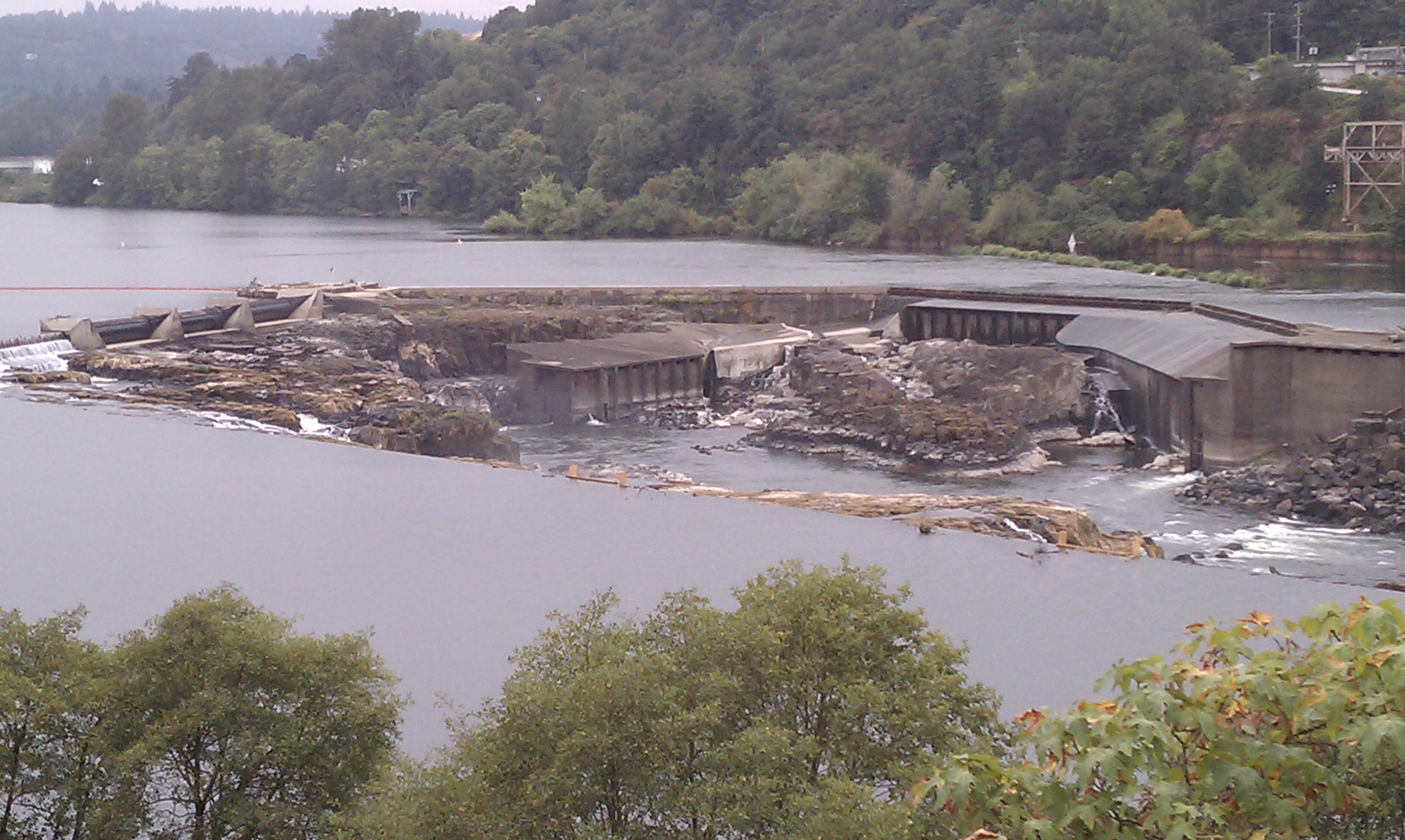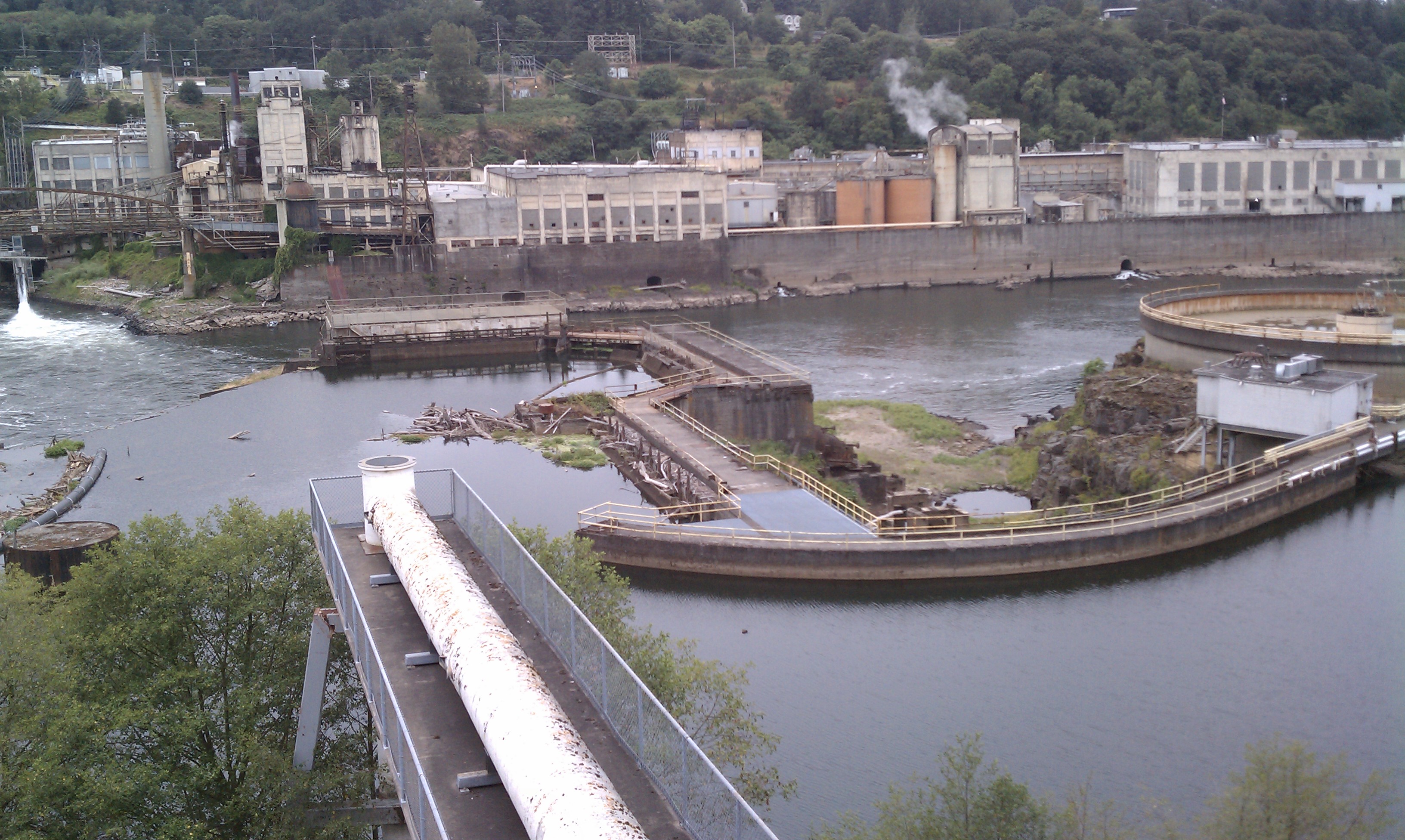Once Oregon City was a thriving town at the end of the Oregon Trail, the largest settlement in the Pacific Northwest. It was the first city in the U.S. west of the Rockies to be incorporated. Now it is overshadowed by Portland, which it once eclipsed in size and importance.
On a recent trip to Oregon, I took the opportunity to visit two museums in Oregon City dedicated to the Oregon Trail. The first, the End of the Trail Interpretive Center, was a disappointment. Unfortunately, this museum fell on hard times during the recent economic downturn, and is only now getting back on its feet. Although the outdoor exhibits were open when I was there a couple of weeks ago, the museum itself had not yet reopened after a closure of several years. Nevertheless, I was delighted to stand at the official “end of the trail” – Abernethy Green – where the emigrants camped when they finally arrived in Oregon City after months of travel. Abernethy Green is much smaller than in 1847, but it has been commemorated with a plaque and garden.
Although the outdoor exhibits were open when I was there a couple of weeks ago, the museum itself had not yet reopened after a closure of several years. Nevertheless, I was delighted to stand at the official “end of the trail” – Abernethy Green – where the emigrants camped when they finally arrived in Oregon City after months of travel. Abernethy Green is much smaller than in 1847, but it has been commemorated with a plaque and garden.
When I told the staff at the End of the Trail Interpretative Center that I was writing a novel about travel on the Oregon Trail, they sent me to another museum in town, the Museum of the Oregon Territory, sponsored by the Clackamas County Historical Society. I worried when I learned that this museum was run by a county historical society, wondering whether I would find an unorganized mish-mash of cast-offs from people’s attics.
But the Museum of the Oregon Territory is a gem. It contains a nice collection of prehistoric Native American artifacts, and also features photographs by Ralph Eddy, whose 60-year career lasted from glass plates to color slides.


More importantly for my purposes, the museum has a good overview of the emigrant history in the area, from the Hudson’s Bay Company fur traders through the American settlers. I saw a log marked by the ropes used to lower wagons down the side of Mount Hood on the Barlow Road. I saw a painting of Oregon City by John Mix Stanley (circa 1852), which I could compare with the 1846 map I had found in my earlier research.
These museums also gave me more names to research for my second novel about the Oregon Trail emigrants, which takes place after my characters arrive in Oregon in late 1847. Some of these founding fathers of Oregon City may show up when my book is finally edited – people like Portland founder Asa Lovejoy, Methodist minister Alvin Waller, and the tanner Daniel Lownsdale.

Oregon City is situated at the falls on the Willamette River, because John McLaughlin built a lumber mill at the falls in 1829. Moreover, the falls stopped the settlers traveling up the Willlamette by boat. According to the Museum of the Oregon Territory website, the Willamette Falls are the second largest waterfall by volume in the United States. My novel features steamboat travel between Portland and Oregon City, but the boats of 1848-1852 could not travel beyond Oregon City, because there was no way to take the boats upriver beyond the falls.

On our visit to Oregon City, my husband (who likes all things nautical) and I also looked for the locks on the Willamette River. These were the first locks in the United States to have multiple lifts, and were made a National Historical Site in 1974. They operated from 1873 until 2011. Since McLoughlin’s first mill opened in 1829, the Willamette Falls have been a commercial site. Now, the area around the falls is heavily industrial, and many of the buildings are decrepit.
(For more on Oregon City and Willamette Falls, see my post Oregon City: End of the Trail, from last October.)
This modern-day visit to Oregon City helped me place many of the events in my novels in geographical and political context – from the mountains and lakes and weather in the area to the provisional and territorial governments.
My visit reinvigorated me, and I am ready to tackle the next draft of my novels. I’ll be posting more about my trip to Oregon in the weeks and months ahead.
Writers, what nuggets of information have you found as you have done research for your books?




When researching “The Late Sooner” I discovered a hand-written first-hand account by an early settler in the Oklahoma Territory of a famine the locals called “The Year of the Turnip.” The year was 1890. All crops failed because of the dry year and prairie fires. Nothing survived but the lowly turnip. They had nothing to feed themselves and the animals but turnips. The chickens and eggs tasted like turnips as well as the pigs. The settlers were saved only by trainloads of wheat shipped in by the government. My great-grandfather’s diary tells of going to the schoolhouse to meet with government agents on behalf of “the sufferers” (those starving people who had given up everything to move to the territory.)
Those first-hand sources are hard to beat.
Thanks for commenting.
Theresa
[…] On our recent visit to the Museum of the Oregon Territory, however, I was able to explain to my husband why Oregon City was located where it was, why John McLaughlin built the first mill at Willamette Falls, and why San Francisco’s first plat was filed in Oregon City rather than in California. This information was all available at the museum, but I was sometimes a step ahead of their display, or I provided more detail than was shown on the placards. I felt pretty smug about my grasp of Oregon Trail trivia. […]